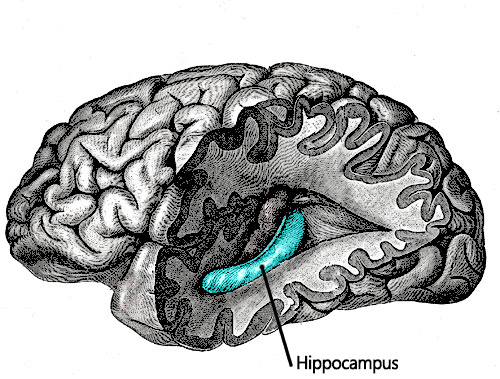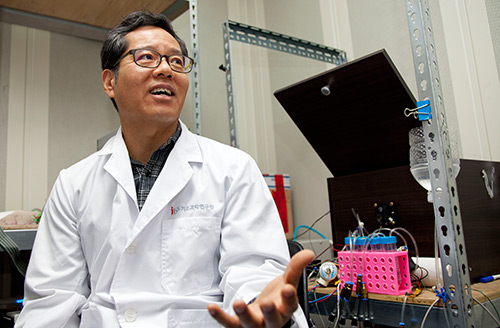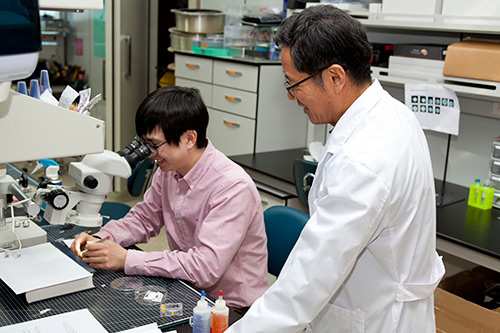주메뉴
- About IBS 연구원소개
-
Research Centers
연구단소개
- Research Outcomes
- Mathematics
- Physics
- Center for Theoretical Physics of the Universe(Particle Theory and Cosmology Group)
- Center for Theoretical Physics of the Universe(Cosmology, Gravity and Astroparticle Physics Group)
- Center for Exotic Nuclear Studies
- Center for Artificial Low Dimensional Electronic Systems
- Center for Underground Physics
- Center for Axion and Precision Physics Research
- Center for Theoretical Physics of Complex Systems
- Center for Quantum Nanoscience
- Center for Van der Waals Quantum Solids
- Chemistry
- Life Sciences
- Earth Science
- Interdisciplinary
- Institutes
- Korea Virus Research Institute
- News Center 뉴스 센터
- Career 인재초빙
- Living in Korea IBS School-UST
- IBS School 윤리경영


주메뉴
- About IBS
-
Research Centers
- Research Outcomes
- Mathematics
- Physics
- Center for Theoretical Physics of the Universe(Particle Theory and Cosmology Group)
- Center for Theoretical Physics of the Universe(Cosmology, Gravity and Astroparticle Physics Group)
- Center for Exotic Nuclear Studies
- Center for Artificial Low Dimensional Electronic Systems
- Center for Underground Physics
- Center for Axion and Precision Physics Research
- Center for Theoretical Physics of Complex Systems
- Center for Quantum Nanoscience
- Center for Van der Waals Quantum Solids
- Chemistry
- Life Sciences
- Earth Science
- Interdisciplinary
- Institutes
- Korea Virus Research Institute
- News Center
- Career
- Living in Korea
- IBS School
News Center
| Title | Unraveling the Secrets of the Brain: Memory, Decision Making, and Time Perception | ||||
|---|---|---|---|---|---|
| Name | Department of Communications | Registration Date | 2016-03-28 | Hits | 3136 |
| att. |
 thumb.jpg
thumb.jpg
|
||||
Unraveling the Secrets of the Brain: Memory, Decision Making, and Time Perception- JUNG Min Whan, Associate Director of the IBS Center for Synaptic Brain Dysfunctions -
“Life is short, science is long”, Jung explains how lengthy his research journey can be before he is able to break down the workings of human brains. Since little is known about how the human brain works to make decisions, memorize, and evaluate values of the memory, researchers at Jung’s lab are busy with numerous experiments going on: In one corner of the lab, researchers are preparing electrodes to be placed in a region of a mouse’s brain; others are conducting tests using mice with electrodes connected to their brains in different experimental settings. Being one of few experts studying systems neuroscience in Korea, Jung joined the IBS Center in 2013 and appointed as the Center’s first associate director last November. Speaking about the heavy responsibility for his new leading role, he also shares with us research findings from his previous research and goals he wishes to achieve at IBS. Exploring the Secrets of the BrainThe human brain can remember a one-time episode, as well as re-occurring events. This episodic memory is known to be controlled by hippocampus, a small region of the brain that forms part of the limbic system. However, there are so many conflicting theories about the underlying mechanism of the information processing in the hippocampus. Jung’s research team has come up with a novel idea about the process: “Our research focuses on the dentate gyrus, the first region of the hippocampus known to be involved in the information processing. Dentate gyrus is widely thought to be responsible for separating similar input patterns into distinct ones. However, we believe its main function is to integrate different sensory information, which is required for exact memory formation. Combing visual, auditory, and motor stimuli is where dentate gyrus comes in.”
Jung’s research team using Bax knockout (Bax-KO) mice, genetically designed to have a damaged dentate gyrus, studied the behavior of the Bax-KO mice in a water maze. It is a test of spatial learning and memory to prompt the mice to escape from the water onto a submerged platform, using spatial cues to learn the platform’s location. By integrating various types of sensory information, wild-type mice managed to find the platform even after it is moved to a different place along with the spatial cues. However, the Bax-KO mice failed to locate the new place of the platform and just roamed around the area where the platform was originally located. “By forming a path integration map using information from the vestibular organ and associating the map with the information on external sensory cues, animals can relocate themselves when the platform is moved to a new location as indicated by the sensory cues. The research suggests that the dentate gyrus is where all sensory information is put together to form the exact memory.” Beginning Research on Neural Activity of the Prefrontal Cortex in RodentsAnother key area of Jung’s research is the prefrontal cortex, which is located in the very front of the brain, just behind the forehead. In charge of abstract thinking and thought analysis, the area is also responsible for regulating behavior. The prefrontal cortex has been a topic of Jung’s research since he was a professor at Ajou University School of Medicine. He has produced significant research findings by expanding the scope of research in this field to mice, which proved to be a conduit of experiments. In Jung’s experiments on value-based decision making, rats performed a foraging task, choosing freely between two paths that delivered a fixed amount of water reward with different probabilities. By trial and error the animals learned which path is more rewarding. Nevertheless, after the probabilities were adjusted, they were able to detect such a change and rediscovered an optimal path quickly. “The experiments showed that rats make a decision based on expected values of potential choices, which are calculated based on the history of past choices and their outcomes. The widespread region of forebrain is involved in updating the values of chosen action. Our results showed that the secondary motor cortex of the rats processes both action selection and value signals. It is quite striking to find out that the similar region of the human brain is also in charge of processing action selection, as well as updating reward values.” Since similar brain regions of rats and humans are involved in this decision making process, the research findings of experimenting with rats may go a long way in human brain research. However, it should be put into perspective that humans’ decision making process is more complicated than animals’. Also, humans sometimes make unusual decisions as we consider other factors as well as reward values. Jung says, “Humans are capable of making a strategic decision to select an action that has the maximum value among all possible actions in the long run. However, it is also true that since the primitive region of our brain is also actively engaged in the decision making process, we often make irrational decisions.” Distorted Time Perception May Lead to Brain DisordersJung’s research team is also investigating how the brain processes temporal information by examining the activity of neurons in rats performing a temporal bisection task, a test which is designed to have rats learn how to respond to the relative duration of stimuli (“short” and “long” buzzing sound). In the task, rats learn that they can find reward on their left and right following less than 3 seconds (short) and over 3 seconds (long) samples, respectively. The experiment showed that prefrontal cortex plays a profound role in rat's ability to discriminate time intervals. Though the further understanding of the brain’s mechanism of time perception can lay the foundation for therapeutic approaches of neurological and psychiatric disorders, temporal information processing in the brain remains largely unknown compared to spatial information processing. “The brain’s perception of time is a critically important research area since the findings can be the key to treating intractable psychiatric disorders. For example, some hypothesize that attention deficit hyperactivity disorder (ADHD) is resulted from impaired time perception. As high order brain functions, such as memory, decision making, and time perception, remain largely unknown, we are still clueless about the causes of many psychiatric disorders. Understanding Neural Circuits Underlying Brain DisordersAfter earning a master degree at the Department of Zoology at Seoul National University, Jung was determined to study the brain mechanism associated with memory. He was so passionate about this memory research that he chose the University of California, Irvine for his doctoral degree just because the university runs the Center for Neurobiology of Learning and Memory. No other information source except the university’s guidebook, which mentioned the center, was available at that time. Regardless this, Jung travelled overseas for his research. Majoring in both psychology and biology, he steadily built his research capacity at the university. His research on working memory (a system for temporarily storing and managing the information required to carry out complex cognitive tasks such as learning, reasoning, and comprehension) was selected as one of top 150 research programs in humanity and social science over the decade from 2001 to 2011 by the National Research Foundation of Korea. The research program was also granted the 1st Chang Jin Award established in memory of Korea’s first neuroscientist, Chang Jin. Even after 30 years of working on brain research, Jung is still enthusiastic about learning new knowledge and techniques in the field. Talking about the future of brain research, Jung explains: “New research methods have opened a new chapter for brain research, such as the sensational research technique, optogenetics introduced in 2005, allowing scientists to manipulate and measure a specific neural circuit. Also, bioimaging enables the detection of neural activities. I want to apply these methods to reveal the high order brain functions.”
Optogenetics has emerged as a powerful tool to control activities of specific neural populatios, as well as protein functions. Jung is already working with an expert in optogenetics, Group Leader HUR Won-do at the IBS Center for Cognition and Sociality (also a professor at the Department of Biological Sciences at Korea Advanced Institute of Science and Technology (KAIST). Another joint research project is underway with his Center’s director Kim Eunjoon. As cellular and molecular changes cause the chain reaction in neurons and synapses, Jung’s collaboration with director Kim is expected to help understand neural mechanism underlying brain functions and malfunctions. Jung believes that high order brain functions, such as decision making and memory, are closely related to brain disorders. He explains, “People with autism, schizophrenia, and depression tend to show abnormal decision making. Understanding the link between altered decision making and such mental disorders will put the seemingly intractable diseases into a new perspective. I am confident that our research will point toward treatment options for impaired decision making in patients with the disorders.” |
|||||
| Next | |
|---|---|
| before |
- Content Manager
- Public Relations Team : Suh, William Insang 042-878-8137
- Last Update 2023-11-28 14:20














